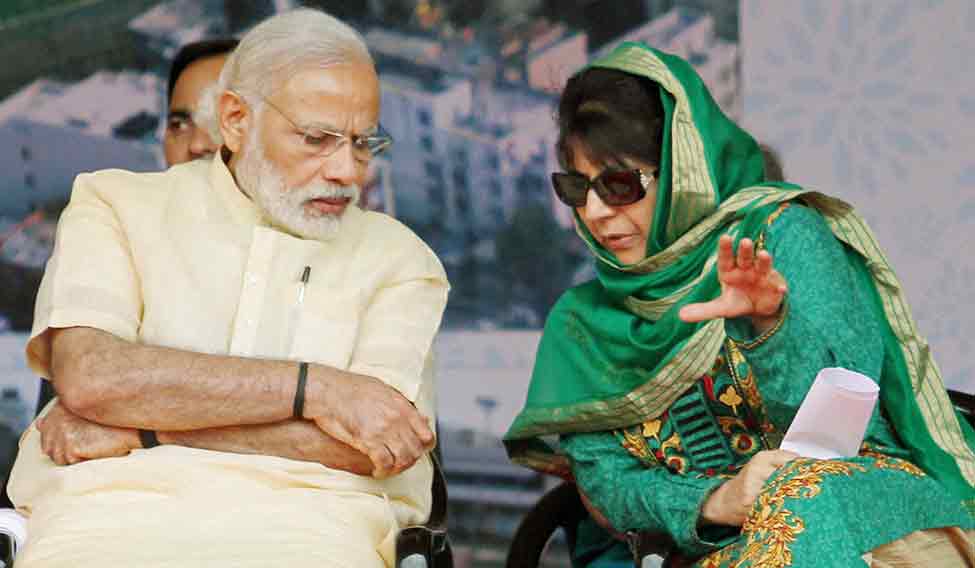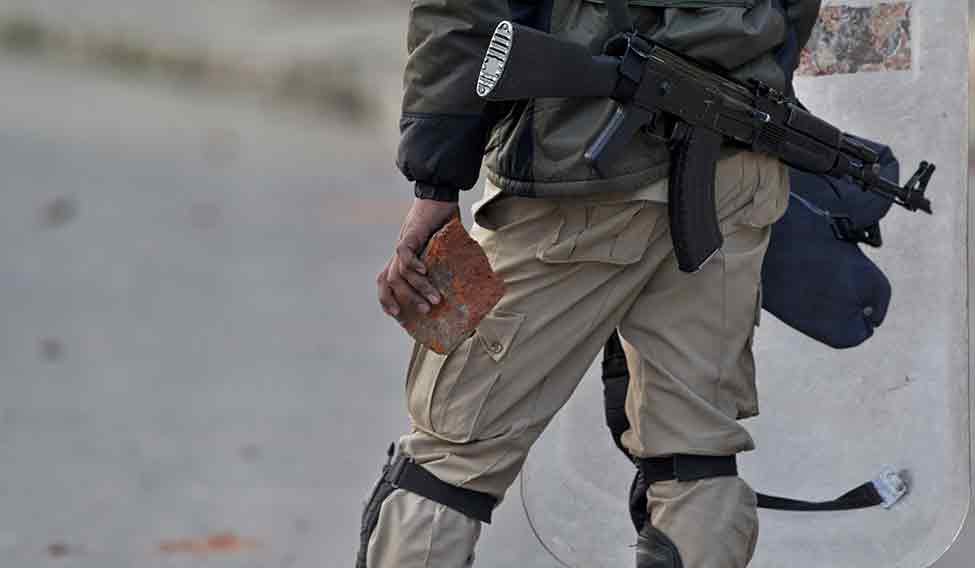Mehbooba Mufti was a fierce opposition leader. In the past, she used human rights violations by security forces to attack the government. However, after taking over as chief minister on April 4, she seems to be getting a dose of her own medicine.
Her opponents attacked her for a fracas at the National Institute of Technology (NIT) in Srinagar, where non-Kashmiri students clashed with local students who allegedly celebrated India's exit from the World Twenty20. In the following days, non-Kashmiri students held protests, classes were suspended and the Central Reserve Police Force was deployed. There were violent clashes between the outstation students and the police, and the institute regained its calm only after the human resource development ministry intervened.
But trouble was just beginning. In the following days, five civilians were killed in Kupwara district when security forces opened fire on people protesting the molestation of a schoolgirl, allegedly by an Army man, in Handwara on April 12. The two violent incidents have rattled Mehbooba, who has been trying to find her feet as chief minister.
The exact details of the molestation attempt are unclear. Soon after allegations spread and led to violent protests, the girl, along with her father and aunt, was taken into police custody. The Army released a video, shot by the police, in which the girl said she was not molested by an Army man and accused two youth of beating and harassing her. The Jammu and Kashmir High Court, in response to a petition filed by the girl's mother, asked the police under which law it had detained the girl. The court also asked her to appear before the chief judicial magistrate on April 17. In her statement before the CJM, the girl said: “On April 12, while going home with my friend after school, I entered a public lavatory near Main Chowk in Handwara. As soon as I came out I was confronted, assaulted and dragged by two boys and my bag was snatched. One of the boys was in school uniform.”
However, on April 16, her mother said the girl had been forced to make the statement to exonerate the Army man who tried to molest her inside the bathroom. Human rights activist Parvez Imroz, who is the counsel for the girl's mother, said a statement made under duress was not admissible in court. “The important question is who recorded the video and how did the Army get access to it,” he said.
On April 19, police arrested Hilal Ahmed Bandey, one of the boys who allegedly harassed the girl, and charged him with assault and spreading rumours about the molestation.
 Modi with Mehbooba | PTI
Modi with Mehbooba | PTI
Several eyewitnesses, requesting anonymity, said the protesters in Handwara raised anti-Army slogans and demanded the arrest of the soldier. They then encircled the Army bunker and set it ablaze, and the police had to use force to rescue the Army men. “A soldier opened fire on protestors, killing Iqbal Farooq Pir, 21, of Drugmulla and Nayeem Qadir Bhat, 22, of Handwara,” said an eyewitness. “Iqbal was shot in the face and died on spot. Nayeem succumbed to his injuries on the way to the district hospital.” The killings sparked violent protests in Handwara and Kupwara, and then spilled over to other parts of Kashmir, especially Srinagar. Scores of people, including women and children, took to the streets to protest the killings. The police had to fire shots in the air and use tear gas shells to control the situation.
At Langate in Kupwara, Raja Begum, in her fifties, took a bullet in her head and died on the way to hospital. At nearby Drugmulla, Jahangir Ahmed Wani died after a tear gas shell hit his head. Arif Hussain, a 19-year-old from Natnusa, died of injuries suffered during the violent protests.
As the situation deteriorated, the Union government rushed more troops to Kashmir, and Mehbooba flew to Delhi to meet Prime Minister Narendra Modi and Defence Minister Manohar Parrikar, and asked them to initiate an investigation. She also spoke to the Northern Command chief Lt Gen D.S. Hooda, who told her that an inquiry had already been initiated.
She then went to Kupwara on April 16 and met the families of some of the victims in Dak Bungalow. “I never dreamt of coming to Kupwara like this after taking over as chief minister,” Mehbooba told them. “These killings are most unfortunate and I am deeply pained by your grief.”
For the new BJP-PDP government, the clashes could be disastrous. An incident like this could undo all the other good work the government does. And the possibility of such incidents recurring is high, irrespective of who the chief minister is. The Peoples Democratic Party, and more so Mehbooba, is mindful of that.
The Kupwara killings have once again highlighted the fragility of peace in Kashmir. Security forces, the police in particular, have not only put crippling restrictions to force peace on the ground, but also imposed an e-curfew to prevent people from discussing the situation on social networking sites.
For Mehbooba and her party, the complexities of handling civilian killings are an early lesson in how difficult it is to govern a sensitive state like Jammu and Kashmir.








